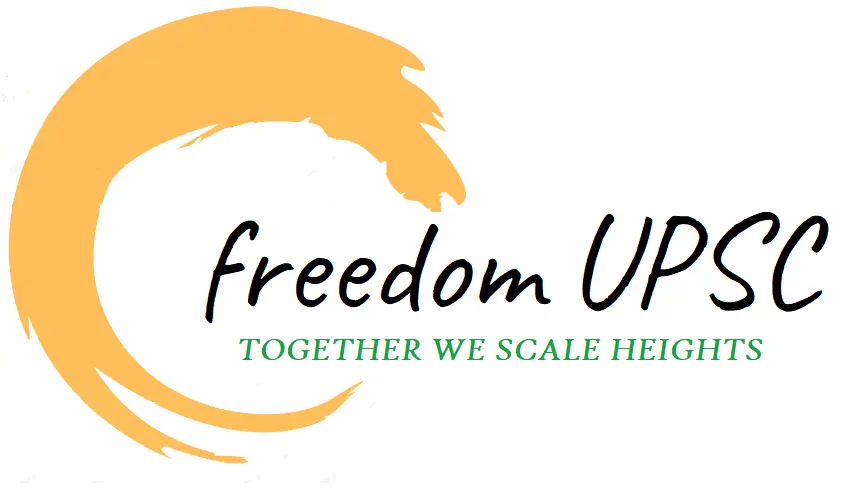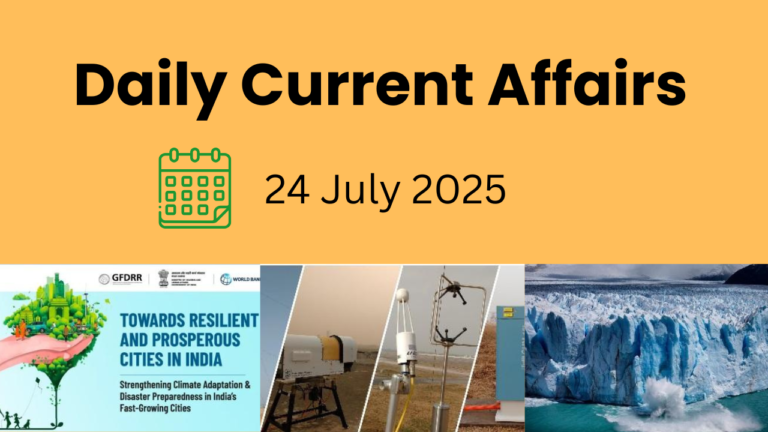1. Supreme Court Advocates Legal Protection for Domestic Workers
Context: In a historic decision, the Supreme Court of India has directed the Union government to explore the need for a dedicated law for domestic workers. The Court has also mandated the creation of an inter-ministerial committee to assess and propose a comprehensive legal framework to safeguard their rights, benefits, and working conditions.
Current Status of Domestic Workers:
Lack of Legal Protection:
- Despite playing a vital role in millions of households, domestic workers remain largely excluded from key labour laws like the Minimum Wages Act and the Equal Remuneration Act.
- While some state governments have introduced local regulations, there is no national legislation to ensure their rights and fair treatment.
Vulnerability and Exploitation:
- Domestic work is predominantly a female-dominated occupation, with a significant number of workers belonging to marginalized communities.
- They endure low wages, job insecurity, and excessive workloads without fair compensation.
- Social security benefits are almost non-existent, leaving them financially vulnerable.
- The profession is often undervalued and seen as an inherent skill of women, making it invisible in formal labour discussions.
Challenges and Legal Interventions:
Global Standards: ILO Convention 189:
- India has not ratified the International Labour Organization (ILO) Convention 189, which guarantees fair wages, social security, and protection against abuse for domestic workers.
Regulation of Placement Agencies:
- The Supreme Court has previously directed the mandatory registration of placement agencies to prevent worker exploitation, but implementation remains weak.
Complex Employment Structures:
- Domestic work varies between full-time and part-time roles, making standardized regulations difficult to enforce.
Why a Separate Law is Necessary:
A dedicated legal framework is crucial to address the unique challenges faced by domestic workers:
1. Proof of Employment:
- Formal documentation is essential to enforce legal protections, but domestic workers often lack employment contracts.
2. Employer Resistance:
- Many households do not consider themselves formal employers, making legal accountability difficult.
3. Power Imbalance:
- The employer’s home serves as the worker’s workplace, limiting regulation, oversight, and protection against exploitation.
Opportunities and Challenges in Implementation:
Ensuring Fundamental Rights:
- A well-structured law can establish minimum wages, regulated working hours, and social security, drastically improving working conditions.
Redefining Power Hierarchies:
- Recognizing housework and caregiving as legitimate labour will help challenge existing inequalities and ensure fair treatment.
Regional Success Models:
- States like Kerala and Delhi have already implemented measures for domestic workers, which can serve as guidelines for national policies.
Challenges in Enforcement:
- Even with new legal protections, monitoring mechanisms and employer accountability will be essential to ensure effective implementation.
Conclusion:
The Supreme Court’s directive provides a critical opportunity to advocate for a national law protecting domestic workers. While legislation alone may not bring immediate change, it is a significant first step toward ensuring fair wages, better working conditions, and social security. The real impact will depend on the recommendations of the committee and the Union government’s commitment to meaningful reforms.
A well-designed legal framework will empower domestic workers, giving them the recognition and rights they deserve in a society that has long overlooked their contributions.
2. Jal Jeevan Mission (JJM) Extended Till 2028: Aiming for Universal Tap Water Access
Context: Union Finance Minister Nirmala Sitharaman has announced an extension of the Jal Jeevan Mission (JJM) till 2028, with a budget allocation of 67,000 crore in the Union Budget 2025-26. However, the scheme has faced a significant budget cut at the revised estimate (RE) stage during the current fiscal year 2024-25.
About Jal Jeevan Mission (JJM):
Launched in 2019, the Jal Jeevan Mission aimed to provide Functional Household Tap Connections (FHTC), ensuring 55 litres per person per day of safe drinking water to all rural households by 2024. However, implementation challenges have led to an extension of the deadline to 2028.
The mission now focuses on:
- Building quality infrastructure
- Ensuring long-term sustainability
- Encouraging community-led water management under the “Jan Bhagidari” (People’s Participation) approach
Key Features of JJM:
1. Objectives & Implementation Strategy:
- Universal Piped Water Access: Every rural household to receive a functional tap connection by 2028.
- Community Involvement: Village Water & Sanitation Committees (VWSCs) or Pani Samitis are actively involved, with 50% representation from women.
- State Responsibility: States and Union Territories (UTs) sign agreements to ensure sustainability and service quality.
2. Administrative Framework:
- Nodal Ministry: The Department of Drinking Water and Sanitation under the Ministry of Jal Shakti oversees implementation.
- Integration of Previous Schemes: JJM replaced the National Rural Drinking Water Programme (NRDWP) for a more structured approach.
3. Funding Structure:
- 90:10 Cost Sharing for Himalayan and North-Eastern States.
- 100% Central Funding for Union Territories.
- 50:50 Cost Sharing for other States.
Current Progress & Budget Allocations:
Achievements Since 2019:
- 80% of rural households now have tap water connections, compared to just 15% in 2019.
- Over 12 crore families now have access to safe drinking water.
States with 100% Coverage:
- Arunachal Pradesh
- Goa
- Haryana
- Himachal Pradesh
- Gujarat
- Punjab
- Telangana
- Mizoram
- Puducherry
UTs with 100% Coverage:
- Andaman & Nicobar Islands
- Dadra & Nagar Haveli & Daman & Diu
Challenges in Implementation:
1. Infrastructure & Connectivity Issues:
- Initial Rapid Expansion: Early progress focused on areas with existing infrastructure, but reaching remote villages has been challenging.
- Water Transportation Difficulties: Many villages need pipelines from distant reservoirs, increasing costs and logistical hurdles.
2. Rising Costs Due to External Factors:
- COVID-19 Disruptions: Supply chain breakdowns and labour shortages affected project timelines.
- Impact of Russia-Ukraine War: Increased equipment and material costs added financial pressure.
- Inefficient Fund Utilization: Despite significant budget allocations, ₹50,000 crore remained unspent in 2024-25, reflecting execution challenges at the state level.
Road Ahead: Key Focus Areas:
1. Strengthening Last-Mile Connectivity:
- Expanding piped water networks to remote and difficult-to-reach areas.
- Upgrading reservoir pumping systems and ensuring sustainable groundwater sources.
2. Optimizing Budget Utilization:
- Enhancing state execution capacity to effectively utilize allocated funds.
- Introducing flexible funding mechanisms to adjust for price fluctuations in materials.
3. Transparency & Accountability:
- Implementing independent verification systems to ensure actual water supply to rural households.
- Utilizing IoT-based monitoring and GIS mapping for real-time tracking of progress.
4. Strengthening Centre-State Coordination:
- Ensuring timely state contributions to avoid project delays.
- Strengthening agreements between the Centre and states for smooth implementation.
5. Promoting Community Engagement & Women’s Leadership:
- Expanding Jan Bhagidari (people’s participation) to increase local ownership of water management.
- Encouraging more women in leadership roles within Pani Samitis to ensure equitable decision-making.
Conclusion:
The Jal Jeevan Mission is a transformative initiative that has already improved millions of lives by providing access to clean drinking water. While the deadline extension to 2028 highlights the challenges in implementation, it also presents an opportunity to enhance infrastructure, improve efficiency, and ensure long-term sustainability.
With strong governance, technological interventions, and community participation, JJM has the potential to achieve universal tap water access, empowering rural communities and ensuring a healthier future for India.
3. Rules for Registering Live-in Relationships Under UCC
Context: With the implementation of the Uniform Civil Code (UCC) in Uttarakhand, new rules for registering live-in relationships have been introduced. These regulations aim to legally recognize such relationships but have also sparked debates regarding privacy and state surveillance.
Understanding Live-in Relationships in India:
Historical Perspective:
Traditionally, Indian society recognized only marriage as a legitimate form of committed relationship. Live-in relationships were stigmatized and socially unacceptable. However, with globalization and cultural shifts, societal acceptance of cohabitation has gradually increased.
Legal Recognition:
Indian courts have upheld the legality of live-in relationships, citing the Right to Life and Personal Liberty under Article 21 of the Constitution.
Landmark Judgments:
- S. Khushboo v. Kanniammal (2010): Recognized that live-in relationships fall under personal liberty.
- Indra Sarma v. V.K.V. Sarma (2013): Classified live-in relationships into different categories and extended protection under the Protection of Women from Domestic Violence Act, 2005 (PWDVA).
- D. Velusamy v. D. Patchaiammal (2010): Clarified that only relationships resembling marriage qualify for legal protection under domestic violence laws.
Protection Under Domestic Violence Act (PWDVA, 2005):
- Women in live-in relationships can seek legal protection under this act.
- Section 125 of the Criminal Procedure Code (CrPC) allows women to claim maintenance.
Inheritance & Maintenance Rights:
- Children born from live-in relationships have the same inheritance rights as those from legal marriages.
- The Supreme Court has upheld these rights in multiple cases.
Rules for Registering Live-in Relationships Under UCC:
The UCC in Uttarakhand mandates registration of live-in relationships for both state residents and individuals from other parts of India.
Registration Process:
- Couples must register their relationship at both commencement and termination stages.
- Documents required include Aadhaar-linked OTP verification, a registration fee, and in some cases, a certificate from a religious leader confirming eligibility for marriage.
Prohibited Relationships:
- The UCC Act lists 74 prohibited relationships—37 for men and 37 for women.
- Couples falling within these restricted categories must obtain approval from religious leaders or community heads.
- The registrar has the authority to reject registrations if the relationship is deemed against public morality or customs.
Key Concerns and Impacts:
Privacy Concerns:
- The registration requirement raises concerns over privacy violations, as seen in the Justice K.S. Puttaswamy v. Union of India case.
- It could lead to increased state surveillance over personal lives.
Barriers for Interfaith and Inter-Caste Couples:
- The approval requirement from religious leaders may pose hurdles for interfaith and inter-caste relationships.
Rights of Women and Children:
- While women in live-in relationships can claim maintenance, these rights are not absolute.
- Inheritance and legitimacy of children need further legal clarity.
Potential for Misuse:
- Some individuals may enter live-in relationships without long-term commitment but later claim legal rights, leading to legal disputes.
Social and Cultural Challenges:
- These rules challenge traditional family values and raise moral and ethical concerns, especially in conservative communities.
Conclusion & Way Forward:
The UCC in Uttarakhand is a step towards legal recognition and protection for live-in relationships. However, balancing regulation with personal freedom is crucial to maintaining social harmony.
4. Aatmanirbharta in Pulses: A Step Towards Self-Sufficiency
Context: The Finance Minister has launched a six-year mission to achieve self-reliance (Aatmanirbharta) in pulses. This initiative aims to increase domestic production, reduce import dependency, and ensure food security.
Key Highlights of the Mission:
Budget & Objectives:
- Budget Allocation: 1,000 crore
- Primary Focus: Boosting the production of Tur/Arhar (Pigeonpea), Urad (Black Gram), and Masoor (Red Lentil)
- Goal: Achieve self-sufficiency in pulses by 2029, eliminating the need for imports
- Support Mechanisms: MSP-based procurement and post-harvest warehousing solutions
India’s Import Dependency:
- In 2023-24, pulse imports surged 84% year-on-year to 4.65 million tonnes, the highest in six years.
- Import costs increased by 93%, reaching $3.75 billion.
- Major Import Sources: Canada, Australia, Myanmar, Mozambique, Tanzania, Sudan, and Malawi.
- The Union Home Minister has set a goal to completely stop pulse imports by 2028-29.
India’s Pulses Production:
India’s Global Standing:
- Largest Producer – Contributes 25% of global production
- Largest Consumer – Accounts for 27% of world consumption
- Largest Importer – Imports 14% of the world’s total pulses
Key Production Insights:
- Pulses cover 23% of India’s total foodgrain area and contribute 9-10% of total foodgrain production.
- Rabi pulses contribute over 60% of total production.
Major Pulses Produced:
- Gram (Chana) – 40% share in total production
- Tur/Arhar – 15-20% share
- Urad & Moong – 8-10% each
- Top Producing States: Madhya Pradesh, Maharashtra, and Rajasthan
- Production Growth:
- 2013-14: 192.55 lakh tonnes
- 2021-22: 273.02 lakh tonnes
- 2022-23: 260.58 lakh tonnes: The increase in production is mainly due to Chana and Moong cultivation.
Challenges Hindering Pulses Production:
- Low Productivity: Pulses are often considered a low-priority crop due to unstable yields.
- Cultivation in Marginal Lands:
- Traditionally grown as a residual crop, often in rain-fed conditions with poor soil fertility.
- The Green Revolution prioritized rice and wheat, pushing pulses to less fertile lands, reducing productivity.
- Lack of Technological Advancements: No significant breakthroughs in technology or high-yielding seed varieties.
- Lower Profitability for Farmers:
- Farmers perceive pulses as less profitable compared to wheat and rice.
- Low adoption of high-yielding varieties (HYV) due to limited awareness and accessibility.
- Post-Harvest Losses: Storage Issues: Excess moisture leads to spoilage and pest attacks, particularly by pulse beetles.
Government Initiatives to Boost Pulses Production:
- National Food Security Mission (NFSM-Pulses): Aims to expand cultivation areas and increase productivity across all districts.
- Research & Development: Indian Council of Agricultural Research (ICAR) is developing high-yielding and climate-resilient seed varieties.
- PM-AASHA Scheme: Includes Price Support Scheme (PSS), Price Deficiency Payment Scheme (PDPS), and Private Procurement Stockist Scheme (PPSS) to ensure Minimum Support Price (MSP) for farmers.
- Integrated Scheme of Oilseeds, Pulses, Oil Palm, and Maize (ISOPOM): Launched in 14 major pulse-producing states to support production and marketing.
- Rashtriya Krishi Vikas Yojana (RKVY): Encourages state-level pulse development programs to boost production.
The Road Ahead: Achieving Self-Sufficiency:
- Establishing Model Pulses Villages: The government will set up model villages for pulses cultivation, starting from the kharif season.
- Utilizing Fallow Land: Plans to bring unused land under lentil cultivation to increase output.
- Creating Seed Hubs: 150 hubs will be developed to distribute high-yielding seeds across key farming regions.
- Promoting Climate-Resilient Varieties: The government will collaborate with agricultural research institutions to develop drought and disease-resistant pulses.
- Incentivizing Farmers & Crop Diversification: Encouraging farmers to cultivate pulses alongside traditional crops to ensure better income and reduced dependency on imports.
Conclusion:
The Mission for Aatmanirbharta in Pulses is a transformative initiative aimed at making India self-reliant in pulse production. By boosting domestic production, investing in technology, and providing farmer incentives, India is on track to reduce imports and strengthen food security.
With strategic planning and execution, India can achieve complete self-sufficiency in pulses by 2029.
5. FIDE vs Freestyle Chess Grand Slam Tour: A Resolution on the Horizon
Context: The ongoing feud between the Freestyle Chess Grand Slam Tour organizers and FIDE, the sport’s governing body, seems to be heading toward a resolution. Recent direct talks between Jan Henric Buettner and FIDE President Arkady Dvorkovich indicate progress after two months of tension between the parties.
About FIDE: The Global Authority in Chess:
FIDE Overview:
The International Chess Federation (FIDE) is the official body overseeing international chess competitions and is recognized by the International Olympic Committee (IOC) as a Global Sporting Organization since 1999.
Founded in Paris in 1924, with its headquarters in Lausanne, Switzerland, FIDE plays a crucial role in shaping the landscape of competitive chess globally.
Key Functions of FIDE:
- Publishes monthly rankings for top players, including categories for women, juniors, and girls
- Maintains national rankings based on the performance of a country’s top 10 players
- Regulates all international chess tournaments
- Connects national chess federations across the globe
FIDE’s Motto:“Gens una sumus” – We are one family, promoting unity in the chess world.
Freestyle Chess: A Game of Creative Strategy:
What is Freestyle Chess?
Freestyle chess, also known as Chess960, was popularized by Bobby Fischer in 1996. Unlike traditional chess, it starts with randomized positions for the back-rank pieces, though pawns remain in their usual spots. This variation encourages players to move beyond established opening theories and think creatively, testing their original strategies.
Key Features of Freestyle Chess:
- 960 possible starting positions, making every game unique
- Eliminates the need for opening theory, focusing on creativity and original thinking
- Retains the standard movement rules for pieces like rooks, bishops, and knights
Other Names for Freestyle Chess:
- Fischer Random Chess
- Chess 9LX
- Chess 960
Freestyle Chess Grand Slam Tour: A Bold New Series
Tour Overview:
The Freestyle Chess Grand Slam Tour is a five-event series launched by German entrepreneur Jan Henric Buettner. The events are set to take place in 2025 across five major cities:
- Weissenhaus
- Paris
- New York
- New Delhi
- Cape Town
Format and Time Control:
Unlike faster formats like rapid or blitz, the Grand Slam will follow a classical time control system:
- 90 minutes for the first 40 moves
- 30 minutes for the remainder of the game
- 30-second increment per move
The Core Issue: ‘World Championship’ Title:
FIDE’s Claim to the Title:
At the heart of the dispute is the use of the term “world championship.” FIDE asserts that only it, as the official chess governing body, can sanction an event as a world championship.
Freestyle Chess Organizers’ Challenge:
The Freestyle Chess Grand Slam Tour organizers dispute this claim, seeking recognition for their own event. The controversy has highlighted the divide between FIDE’s control over official titles and the organizers’ desire for recognition.
Financial and Contractual Disagreements:
Financial Clash:
The organizers of the Freestyle Chess Tour offered $100,000 to FIDE as a goodwill gesture to avoid conflict. However, FIDE allegedly rejected this offer, instead demanding $500,000. Later, FIDE expressed a willingness to accept $50,000 annually to avoid interfering with the Grand Slam series.
FIDE’s Perspective:
FIDE emphasizes that the world championship title is a major revenue source for the organization, helping to fund grassroots chess initiatives. Allowing another body to use this prestigious title could undermine FIDE’s system, which supports the development of chess worldwide.
Contractual Restrictions on Players:
FIDE’s contracts for key events like the Candidates Tournament and World Chess Championship contain clauses that prohibit players from competing in non-FIDE-approved world championships. As the 2025-26 World Championship cycle approaches, players will be required to sign agreements stating they won’t participate in unauthorized events. Any violation could result in exclusion from FIDE’s world championship cycles.
The Road to Resolution:
Despite the tension, recent discussions signal that a resolution is near. Both sides are working to find a middle ground that allows the Freestyle Chess Grand Slam Tour to proceed while maintaining the integrity and recognition of FIDE’s world championship events.
Conclusion: A Critical Turning Point for Chess
The feud between FIDE and the Freestyle Chess Grand Slam Tour has highlighted the complexities of chess governance, the value of prestigious titles, and the financial dynamics behind the sport. As the negotiations move forward, a compromise could pave the way for a future where both traditional and freestyle formats can coexist within the global chess community. Will this be the beginning of a new era in competitive chess? Only time will tell.
6. AI-Driven Genetic Testing: Navigating the Challenges and Risks
Context: Artificial intelligence (AI) has revolutionized genetic testing by significantly accelerating the processing of genetic information. While this allows for faster analysis, it also magnifies the risk of data breaches and security leaks, posing challenges for privacy and data protection.
The Human Genome Project (HGP): A Milestone in Genetic Research
Launched in 1990, the Human Genome Project (HGP) was a monumental 13-year initiative aimed at mapping the complete DNA sequence of the human genome. The primary goals were to:
- Identify the 20,000-25,000 genes within the human genome.
- Develop technologies to store, organize, and analyze vast amounts of genomic data.
- Address ethical, legal, and social implications (ELSI) arising from genetic discoveries.
The human genome consists of around 3 billion base pairs, with genes distributed unevenly across the genome. Interestingly, over 9% of the DNA sequence is identical in all humans, while just 0.1% accounts for our individual differences. A significant portion of the genome is made up of repetitive DNA sequences with still-unknown functions.
AI’s Role in Genomics: Unlocking New Potential:
AI has played a crucial role in the transformation of genomic research. It enables researchers to process and analyze larger datasets at unprecedented speeds. For instance:
- John Hopkins researchers used machine learning to analyze junk DNA (non-coding DNA), discovering its connections to tumors and opening new pathways for cancer research.
- AI algorithms can detect complex patterns in vast genetic datasets that would be nearly impossible to identify manually.
- AI is also capable of predicting genetic disease-causing traits, interpreting gene-environment interactions, and offering personalized health insights.
AI models can be continuously updated with the latest scientific research, ensuring that genetic analyses stay current.
Challenges with AI in Genetic Testing:
While AI-driven genetic testing offers numerous benefits, there are several challenges to be aware of:
- Predicting Complex Outcomes: Genetic tests cannot reliably predict complex outcomes like job success or academic achievement. Genetics plays only a partial role (around 30%), with other factors such as environment, education, and lifestyle also having significant influences.
- Uncertain Diagnoses: Genetic testing results can sometimes be inconclusive, particularly when dealing with variations of unknown significance. These may require further testing or family history analysis.
- Ethical Dilemmas: Genetic testing can raise profound ethical concerns, particularly when unexpected findings arise or when predictions are made about mental health conditions.
- Limited Scope: For example, genetic testing for Alzheimer’s may identify risk genes, but it doesn’t guarantee the disease. A person without the gene can still develop Alzheimer’s, and conversely, someone with the gene may never develop it.
- Proactive Health Measures: The goal of genetic testing should be to offer insights for preventative health rather than make definitive diagnoses.
Ensuring Genetic Data Privacy and Security:
To reduce the risk of genetic data breaches and protect individuals’ privacy, several measures can be implemented:
- Encryption: Employ strong encryption methods to protect genetic data both during transmission and while stored.
- Access Control: Limit access to genetic data to authorized personnel only. Use multi-factor authentication to enhance security for users handling sensitive data.
- Secure Storage: Store genetic data in secure, controlled environments, such as dedicated servers or cloud platforms with robust security protocols.
- Regular Security Audits: Conduct frequent security audits to identify and address vulnerabilities in the system.
- Anonymization: Whenever possible, anonymize or de-identify genetic data used for AI training and analysis to minimize the risk of linking it back to individuals.
- Software Development Practices: Adopt secure software development practices to minimize vulnerabilities in AI algorithms and software.
- Employee Training: Educate employees who handle genetic data on security best practices, data privacy regulations, and the importance of protecting sensitive information.
- Transparency and Consent: Ensure transparency with users about how their genetic data is being used and obtain informed consent before collecting or analyzing it.
Conclusion:
While AI-driven genetic testing holds immense promise in advancing healthcare, the associated risks and ethical concerns cannot be ignored. By addressing these challenges through improved data protection measures and ethical practices, we can ensure that the benefits of AI in genomics are realized without compromising individual privacy and security.




